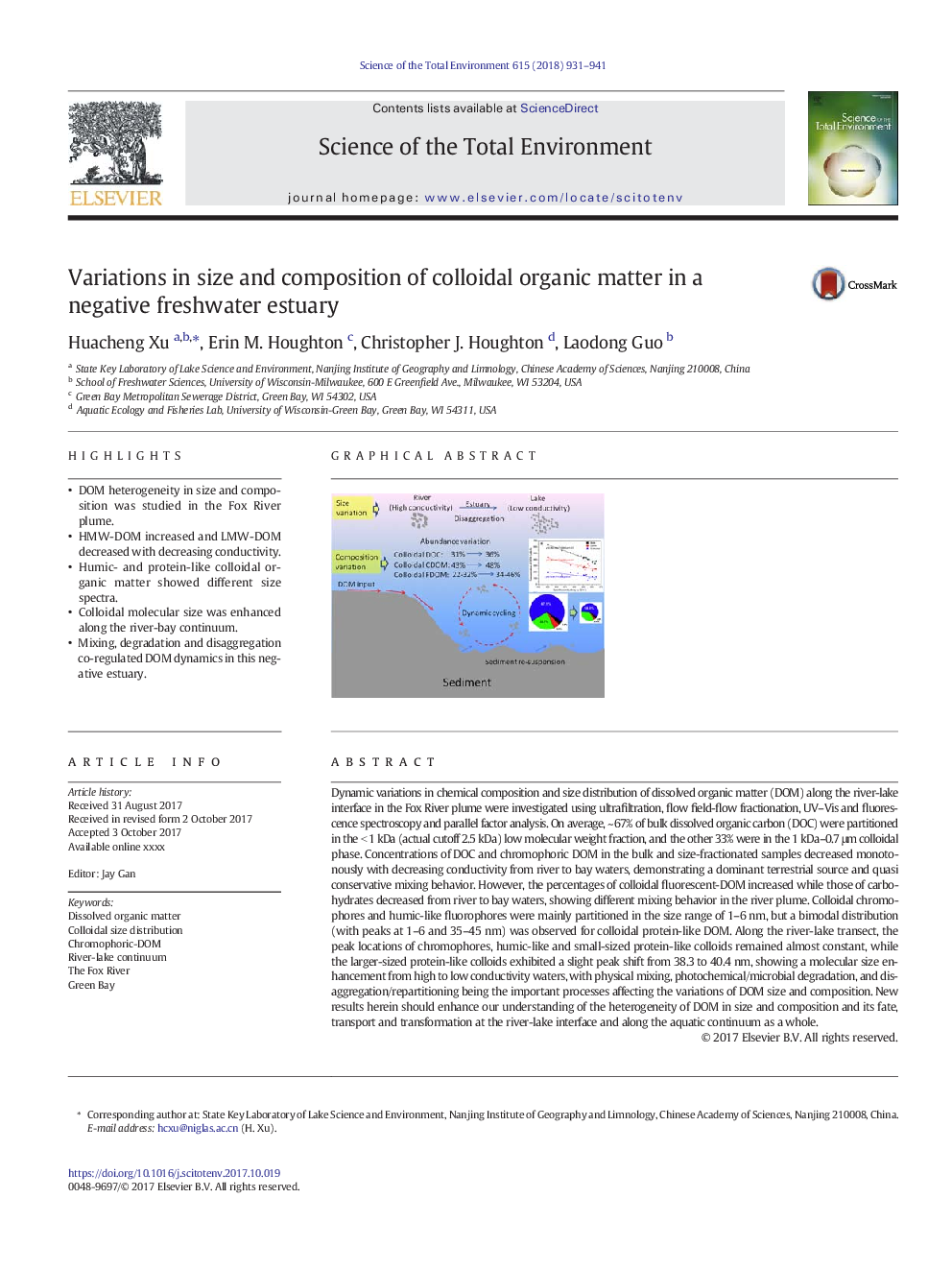| کد مقاله | کد نشریه | سال انتشار | مقاله انگلیسی | نسخه تمام متن |
|---|---|---|---|---|
| 5749848 | 1619689 | 2018 | 11 صفحه PDF | دانلود رایگان |
- DOM heterogeneity in size and composition was studied in the Fox River plume.
- HMW-DOM increased and LMW-DOM decreased with decreasing conductivity.
- Humic- and protein-like colloidal organic matter showed different size spectra.
- Colloidal molecular size was enhanced along the river-bay continuum.
- Mixing, degradation and disaggregation co-regulated DOM dynamics in this negative estuary.
Dynamic variations in chemical composition and size distribution of dissolved organic matter (DOM) along the river-lake interface in the Fox River plume were investigated using ultrafiltration, flow field-flow fractionation, UV-Vis and fluorescence spectroscopy and parallel factor analysis. On average, ~ 67% of bulk dissolved organic carbon (DOC) were partitioned in the < 1 kDa (actual cutoff 2.5 kDa) low molecular weight fraction, and the other 33% were in the 1 kDa-0.7 μm colloidal phase. Concentrations of DOC and chromophoric DOM in the bulk and size-fractionated samples decreased monotonously with decreasing conductivity from river to bay waters, demonstrating a dominant terrestrial source and quasi conservative mixing behavior. However, the percentages of colloidal fluorescent-DOM increased while those of carbohydrates decreased from river to bay waters, showing different mixing behavior in the river plume. Colloidal chromophores and humic-like fluorophores were mainly partitioned in the size range of 1-6 nm, but a bimodal distribution (with peaks at 1-6 and 35-45 nm) was observed for colloidal protein-like DOM. Along the river-lake transect, the peak locations of chromophores, humic-like and small-sized protein-like colloids remained almost constant, while the larger-sized protein-like colloids exhibited a slight peak shift from 38.3 to 40.4 nm, showing a molecular size enhancement from high to low conductivity waters, with physical mixing, photochemical/microbial degradation, and disaggregation/repartitioning being the important processes affecting the variations of DOM size and composition. New results herein should enhance our understanding of the heterogeneity of DOM in size and composition and its fate, transport and transformation at the river-lake interface and along the aquatic continuum as a whole.
176
Journal: Science of The Total Environment - Volume 615, 15 February 2018, Pages 931-941
